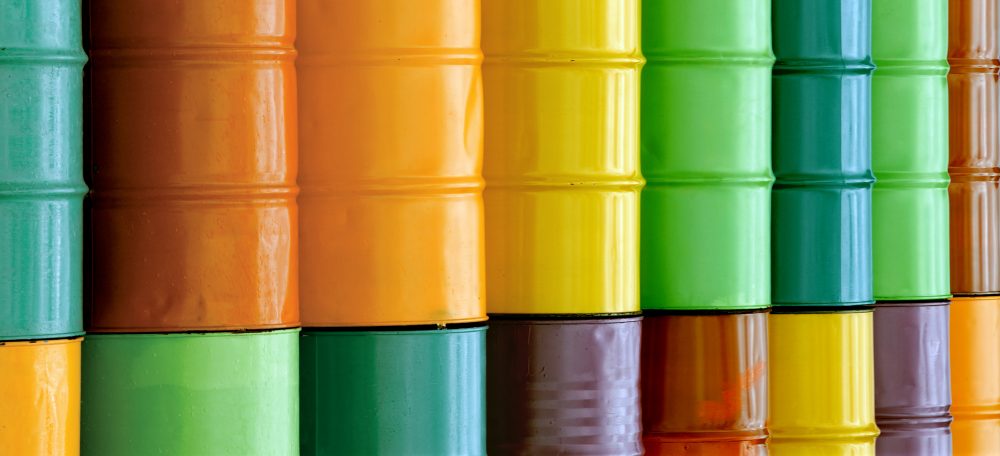Proper Tank Labeling – Maintain Product and Equipment Integrity

Proper Tank Labeling
The Importance of Properly Labeling Your Tanks
Architect Frank Lloyd Wright said, “there is nothing more uncommon than common sense,” and as humans, despite whatever common sense we may have, slipups and mistakes are inevitable. In many aspects of life the margin for error is more forgiving, but in the business world while operating heavy machinery and managing hazardous materials, mistakes and slip-ups can be catastrophic, costly, environmentally detrimental and dangerous. Melissa Carson, Business Development Manager and Contract Specialist for SCL shares an important insight into the proper tank labeling of above and below ground tanks to maintain the quality and integrity of your products and equipment as part of your preventative maintenance. That might seem like common sense, but according to Melissa, it’s a shockingly common oversight that can cost your organization both time and money unnecessarily.
A Common But Costly Mistake
In the years that she’s worked for SCL, Melissa Carson has seen some interesting examples of operator error with the proper and improper storage and labeling of tanks and products. “I literally get calls from customers 1 to 2 times per week where they’re upset because something has changed in-house and they don’t know what to do. They have a new worker who moved stuff around, they spray painted 15W40 onto an otherwise unmarked tank but they carry 3 different kinds of 15W40 or there’s something wrong with their oil – blue sludge, water, etc. This happens because people don’t properly label things. It’s a really common thing that gets overlooked all the time and it’s easily prevented. You’re paying all of this money for products that protect your engines and transmissions, so owners and managers need to go out into their shops from time to time to check on how everything is running. Do you have current manufacturer labels after a recent formulation change? Current MSDS / SDS sheets? Are you in compliance with regulations based on your municipality, following the parameters for equipment and spill containment? It’s all basic information, people just need to be reminded.”
Helpful Steps to Ensure Proper Tank Labeling of Your Products
What can you do to prevent costly labeling mistakes? Here are some suggestions to save your organization both time and money with proper tank labeling:
- Take a look around your shop – By spending some time walking through your current inventory and checking for the appropriate and current labeling, you not only catch labeling mistakes such as labels facing the wall, missing labels, dirty, illegible labels, outdated manufacturer labels or incorrect MSDS / SDS specs, but you also keep your finger on the pulse of what you have in stock. With just a quick look around the shop you can make sure everything is in workable order and lined up to maximize productivity and efficiency.
- Call your local fire department – Whether you’re a new shop, under new ownership or simply want to be proactive in making sure that you’re compliant with proper tank labeling and the labeling of drums and pails, a call to your fire department or fire marshall will help you stay on track with local, state and federal regulations. Avoid an impromptu audit and fines with proper labeling and containment of your inventory and above and below ground tanks.
- Keep it clean – This may seem painfully simple, but it will save you from having to fork out a painful amount of money unnecessarily in fines or for damage control when someone puts the wrong product in the wrong tank because of unclean conditions or insufficient labeling. Keep your shop, your equipment, your surfaces and your inventory clean. Properly label your tanks and clearly separate new from used oil. Replacing a $300,000 piece of equipment because the new 10W30 was unlabeled beside your waste oil tank is not something you want to deal with, and cleaning a tank – especially an underground tank – can be extremely expensive.
- Update manufacturer and MSDS / SDS labels – From time to time, manufacturers will change the formulation on a certain product and will supply distributors with updated labels to be adhered to tanks, drums and pails. Make it a top priority to have the most current manufacturer and MSDS / SDS labels on your tanks. MSDS / SDS sheets for all SCL products can be found on our website or can be provided by an SCL consultant.
- Schedule a plant survey – As your distributor and supplier we are happy to come to you to conduct a plant survey, personally assessing the proper labeling and containment of your products to ensure compliance with regulations. We won’t pump if we don’t know what’s in the tank, so having us out for a plant survey will ensure total product integrity of containment.
Contact an SCL Consultant today
In a wide range of industrial sectors, if there’s metal touching metal, oil is involved. At SCL, we’re here to protect and optimize the machines that keep our country moving and we pride ourselves on providing superior logistics and solutions, extensive product and industry knowledge and total performance satisfaction for our customers. As a preventative maintenance measure we recommend taking the time to assess the current labeling of your tanks, both above and below ground to ensure compliance with the proper storage of products as well as local, state and federal regulations. For more information on how to properly label your tanks and products, to make sure that your manufacturer labels are current or if you would like to schedule a plant survey, contact an SCL consultant today.
